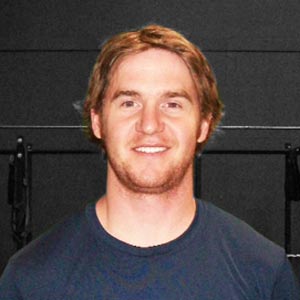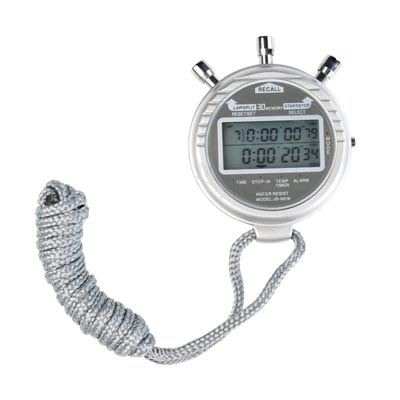
By Travis Hansen
Since standardized testing for speed via the 10, 20, 40, and 60-yard dash was first practiced, coaches and/or testing administrators have opted for the use of handheld stopwatches. Not only is there a tremendous amount of variance associated with this approach, but it’s a complete disservice to any athlete who seeks a legitimate speed measure.
Wouldn’t it be great if we simplified all of this controversy and just made it mandatory for all coaches, trainers, parents, athletes, etc. to test with a Fully Automated Timing System (FAT), so that there was no potential for error, just like in track and field? Each athlete’s start and finish of a sprint would be measured with “failproof” electronic technology.
Of course, there would be a relatively small investment that needs to be made; however, increasing reliability and integrity of the target skill is what is most important here. If you analyze the credibility of any single athletic-based skill, speed is hands down the absolute least reliable! We all know of those people who claim that they or their athlete runs a 4.4 40-yard dash, yet when the time comes to test, they either cower, are injured, or yield a 5.2. Of course, there exists a very small percentage of these individuals who are indeed telling the truth, but they are few and far between, in my experience.
It’s past time that we, as coaches in the industry, stand up and start doing things the right way and test speed through an accepted and proven protocol. Look at how strict bodybuilding, powerlifting, and Olympic lifting competitions are regulated. Speed testing should be no different.

Other issues that I think are affected by the handheld approach are the methods for recruiting and signing bonuses for athletes. I’m referring mainly to football players right now, since football is the only sport that puts any emphasis on linear speed, although baseball is on the rise here. If a kid has an electronically verified 4.5 40-yard dash on a FAT system and he is coming off an injury or just had a bad day and happens to run only a 4.7 on his or her recruiting trip, then the coach knows without question where that kid is in the speed department and the impact it could bring on the football field. Essentially, using a FAT system makes the job of coaches a bit easier and builds trust in the testing approach. Multiply this across the entire country and you now have a valid system that effectively delivers for everyone.
I think the biggest fear for the majority of people is the “culture shock” this would have on all of the times you have heard in the past. However, there is an easy solution for this. Here is an article from CBS Sports that discusses the potential dilemma. It is noteworthy that the NFL has established a committee who has evidence of FAT times, but has failed to report the results from the past 3 NFL Combines to the general public.
According to studies at the 1972 Munich Olympics and several other sources, there exists an approximate .20-.24 tenths of a second difference between handheld times and FAT times. 1 2 The fix here then becomes simple and easy. As long as you have a FAT reference time, you can subtract two-tenths from it to yield an accurate handheld time. It’s that simple. In the video below, I’m matched up against Denarius Moore of the Oakland Raiders, who recorded a 4.37 second 40-yard dash in this video and then ran the exact same time at his pro day at Tennessee two weeks later. The timer on the screen has been re-formatted to match the timer of the FAT system we use at our training facility. As you can see, the numbers add up: 4.67-.24 tenths of a second equals 4.43!
Hopefully, this short article helped open up some eyes to the world of speed testing in team-sport settings. We shouldn’t overlook this issue—I have seen it affect people, and it will continue to do so until we make FAT mandatory everywhere.
References
1: The Truth About Speed, NFL Combines and the 40 Yard Dash!
2: Hand-timed versus Electronic-timed 40 Yard Dash
About the Author
Travis Hansen has been involved in the field of Human Performance Enhancement for nearly a decade. He graduated with a bachelor’s degree in fitness and wellness and holds three different training certifications from the ISSA, NASM, and NCSF. Travis was the head strength and conditioning coach for the Reno Bighorns of the NBADL for their 2010 season, and he is currently the director of the Reno Speed School inside the South Reno Athletic Club. He has worked with hundreds of athletes from almost all sports, ranging from the youth to professionals. He is also the author of the hot selling “Speed Encyclopedia”, a performance writer, and the leading authority on speed development through the International Sports Sciences Association.
Please share this article so others may benefit.
[mashshare]

